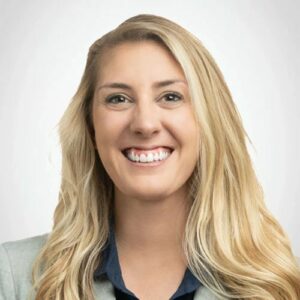The internet is everywhere. Consumers and businesses alike depend on its availability daily to communicate, shop, connect, do business, build relationships, combine infrastructures, collect data, and do just about anything required of the modern age. The internet has become so embedded into our daily lives, many would struggle to move forward without it.
Right now, we exist alongside Web 2.0, which is the combination of websites and applications that allow people to create, share, and consume online content. Web 2.0 first came into usage in 1999, as the internet shifted away from being read-only content built using server-side includes or CGI, available only from a server’s file system, that consisted primarily of frames and tables on a page.
When Web 2.0 came into existence the web all of a sudden became a participative web, where users could interact with one another, create their own websites, and enjoy much more interactive content. The defining features of Web 2.0 include:
- Free-flowing, distributing, and sorting of information.
- Dynamic content.
- APIs that allow connecting applications and services together.
Web 2.0 gave birth to blogging, vlogging, e-commerce, podcasting, social networks, tagging, RSS news curation, profiles, polls, online advertising, and streaming media. It’s easy to see why Web 2.0 is often referred to as the “Social Web.” And clearly, the importance of Web 2.0 cannot be overstated.
At some point, in the near future, Web 2.0 is going to give way to Web 3.0. This shift could very well be a dramatic change in how the web works and what it offers.
So what is Web 3.0 and why should it matter to businesses?
Centralized vs. Decentralized
Before we get into what Web 3.0 is, it’s important to understand the difference between centralized and decentralized (as this will be key to knowing what Web 3.0 is capable of).
Centralized
A centralized network is built around a single, central server that handles traffic management and data processing. Think of it this way: Your business uses a server (either on-premises or from a third-party host) that serves up your content. That server (or cluster of servers) is the only repository for that content. That’s how the centralized web works.
The advantages of a centralized network include:
- Easy to deploy.
- Easy to add/remove systems, users, services, and content.
- Inexpensive.
The disadvantages of a centralized network include:
- Single point of failure.
- Security risk.
- Challenging to scale.
Decentralized
A decentralized (or distributed) web, on the other hand, spreads out the task of serving up your content to servers all over the world. One of the biggest benefits of this is that your content is never not accessible. If one server goes down, there are other servers available to serve it up.
The advantages of a decentralized network include:
- Reliability.
- Scalability.
- Speed.
Now that you understand what a decentralized network is, let’s talk Web 3.0.
What is Web 3.0?
Web 3.0 is centered around blockchain technology. For those that don’t know, blockchain is an electronic ledger that provides a digital record maintained on a distributed network. One of the biggest benefits of blockchain is that, because it uses a distributed consensus, it’s impossible to alter data without alerting the entire network. That equates to a level of security Web 2.0 cannot touch.
Given how rampant network attacks have become, migrating to a distributed (blockchain-based) network would be a vast improvement over Web 2.0. And because Web 3.0 sort of shifts the web into a distributed database of content, where Web 2.0 was a major upgrade to the front-end of things, Web 3.0 will be a significant upgrade to the web’s back-end. This is not only long overdue, it’s a requirement if businesses are to continue advancing technology to meet the growing demand of consumers and pipelines.
The main features of Web 3.0 include a semantic web (which means internet data is machine-interpretable metadata), heavy use of artificial intelligence, 3-D graphics, distributed connectivity, and ubiquity (everything is connected everywhere).
Web 3.0 will be a significant change for businesses because it will mean the web is more portable, accessible, individually focused, and better capable of handling live streams. It will give rise to smart applications consolidating content, offering higher user engagement, and will allow for behavioral advertisement. Web 3.0 will also hand ownership of data back over to end-users, which will lead to more trust. That trust will go a long way to help businesses build better relationships with consumers, so it’s a win-win.
But, again, the biggest benefits of the decentralized Web 3.0 are uninterrupted service and security, which are two of the biggest issues with Web 2.0.
Conclusion
Web 3.0 isn’t going to happen overnight. More likely, this innovative new network will start with a few businesses and then explode to take over our current iteration. It will be a massive challenge to get it rolled out and companies will have to work hard to make the transition seamless. However, in the end, the migration will be well worth the effort.






